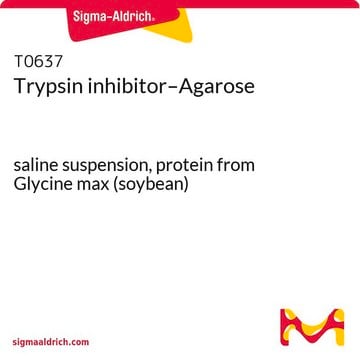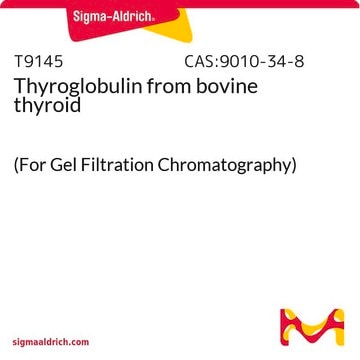10109886001
Roche
Trypsin Inhibitor
from soybean
Sinonimo/i:
trypsin
About This Item
Prodotti consigliati
Origine biologica
soybean
Livello qualitativo
Stato
lyophilized
PM
Mr 20,100
Confezionamento
pkg of 50 mg
Produttore/marchio commerciale
Roche
Concentrazione
1 mg/mL
tecniche
cell culture | mammalian: suitable
pH
3.8-4.5
Solubilità
water: soluble
Temperatura di conservazione
2-8°C
Descrizione generale
Specificità
Applicazioni
Azioni biochim/fisiol
Specifiche
Isoelectric point: 4.5
Definizione di unità
Nota sulla preparazione
Working solution: Recommended solvent is distilled water.
Stock solution: 1 mg/ml
Storage conditions (working solution): -15 to -25 °C
The enzyme is stable for 6 months, frozen in aliquots.
Ricostituzione
Stoccaggio e stabilità
Altre note
Codice della classe di stoccaggio
11 - Combustible Solids
Classe di pericolosità dell'acqua (WGK)
WGK 2
Punto d’infiammabilità (°F)
Not applicable
Punto d’infiammabilità (°C)
Not applicable
Scegli una delle versioni più recenti:
Possiedi già questo prodotto?
I documenti relativi ai prodotti acquistati recentemente sono disponibili nell’Archivio dei documenti.
I clienti hanno visto anche
Il team dei nostri ricercatori vanta grande esperienza in tutte le aree della ricerca quali Life Science, scienza dei materiali, sintesi chimica, cromatografia, discipline analitiche, ecc..
Contatta l'Assistenza Tecnica.







